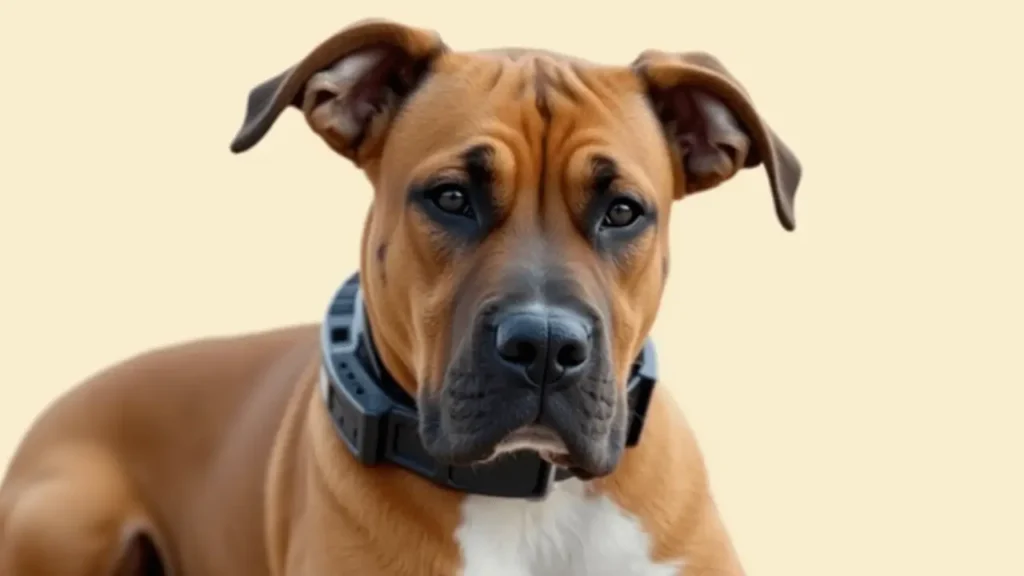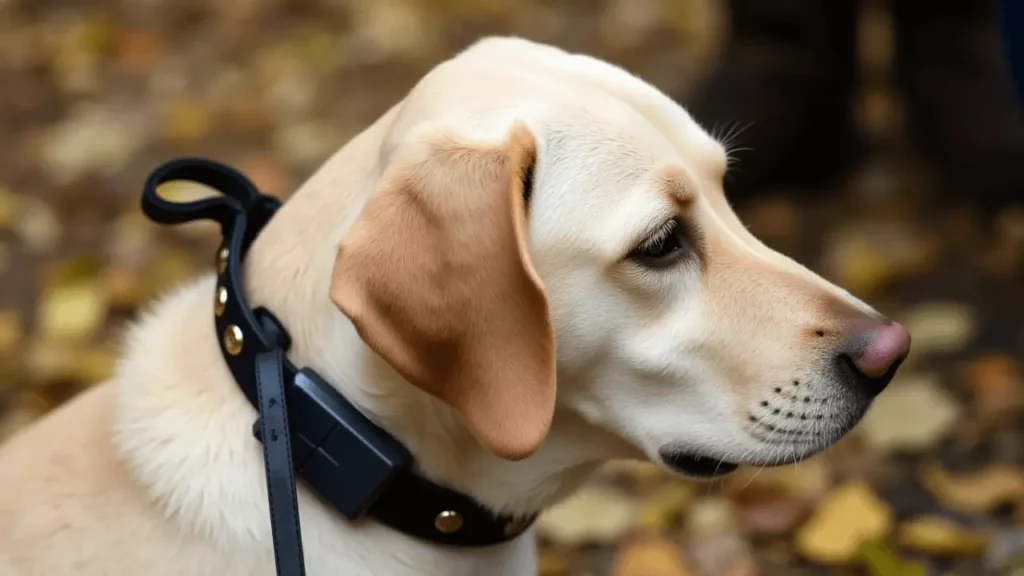Shock Collar Little Dog – Best Training Collars for Small Dogs
Are you struggling with training your small dog? A shock collar little dog owners trust can be an effective tool for correcting behavior gently. Small breeds like Poodles, Beagles, and Dachshunds often have strong personalities, making training challenging.
This guide will help you find the best shock collar for small dogs, offering humane and adjustable training options. Whether you’re dealing with excessive barking, leash pulling, or stubborn behavior, the right collar can improve your dog’s obedience while ensuring their comfort and safety.
This guide will help you find the best shock collar for small dogs, offering humane and adjustable training options. Whether you’re dealing with excessive barking, leash pulling, or stubborn behavior, the right collar can improve your dog’s obedience while ensuring their comfort and safety.
Since 2008, small dogs have become very popular, with over 50% of homes having one. These little dogs often have territorial issues and training problems. They need special ways to learn.
A shock collar for small dogs can be a big help. These collars give you control and help with common problems in small breeds like Poodles, Beagles, and Dachshunds.
This guide will help you pick the best shock collar for small dogs. You’ll learn about the right remote training tools for your dog. We’ll cover training challenges and the top-rated collars to choose from.
Dealing with issues like too much barking or pulling on the leash? The right shock collar can change your small dog’s behavior. It helps them become a well-behaved friend.
Ensure your small dog’s safety and training success! Check out the best shock collars for little dogs now!
Time needed: 2 minutes
- Shock Collar Little Dog – Best Training Collars for Small Dogs
This image features a small dog wearing a modern shock collar, designed for gentle and effective training. With adjustable settings, these training collars help manage excessive barking, leash pulling, and stubborn behavior while ensuring the dog’s comfort and safety. Perfect for small breeds like Poodles, Beagles, and Dachshunds.

Shock Collar Training Challenges for a Little Dog – What to Expect
Training small dogs is different from training big ones. As a professional dog trainer, I’ve found that small dogs face big challenges. These challenges often surprise many owners.
Why a Shock Collar for a Little Dog Is Effective in Training
Small breeds have strong personalities that make training tough. Territorial instincts and less natural obedience are big hurdles. Studies show that about 20% of small dog problems come from bad early training.
Shock Collar Solutions for Common Small Dog Behavioral Issues
Small dogs often bark too much, pull on leashes, and get aggressive with big dogs. Tools like bark collars and anti-bark devices can help. But, they need to be used with positive training methods. It’s important to understand each breed’s mind.
How a Shock Collar for a Little Dog Improves Training Success
Training collars are a key tool for small dog training. They help by giving gentle corrections that teach good behavior. Experts say to pick collars with different levels of correction for a better fit for each dog.

Best Shock Collar for a Little Dog – Types & Features
Discover the top-rated shock collars designed specifically for small dogs. Find the perfect balance of safety, comfort, and effectiveness for training your furry friend.
👉 Click here to explore the best options!
Choosing a training collar for small dogs offers many options. The market has various solutions for different needs. From vibration collars for puppies to remote controlled ones, each has its own benefits.
Shock collars are still popular, but there are gentler alternatives. No-shock dog collar technologies use vibrations or citronella sprays. These methods guide behavior without harsh stimulation.
Remote controlled training collars are a high-tech choice. They let owners communicate clearly with their pets. The Micro Educator e-collar, for example, is smaller and lighter, perfect for dogs over 5 pounds.
Martingale collars are loved for their gentle correction. Today’s collars also have reflective materials and personalized tags. They’re adjustable, fitting well as your puppy grows.
When picking a collar, think about your dog’s personality and training needs. The right collar and approach make training positive and effective. This way, you can help your small dog learn and grow.

Shock Collar for a Little Dog – How It Works & When to Use It
Training small dogs needs a careful approach. Knowing how shock collars work helps owners make better choices. *Dog training technology* has grown a lot, offering many ways for trainers and dogs to communicate.
Safety Features and Controls
Modern shock collars have advanced safety features to protect small dogs. The shock mode can be controlled safely, ensuring a gentle shock. This helps avoid stressing the dog too much.
Manufacturers have made systems that let you set precise levels of stimulation. This prevents accidental shocks that are too strong.
Training Modes: Versatile Communication
Most shock collars have 3 modes: beep, vibration, and shock. This gives owners different ways to train their dogs. The vibration setting is a softer option for dogs that get nervous easily.
*Tone-based modes* are also great for training small breeds. They help dogs learn without feeling too much shock.
Proper Collar Fitting for Small Breeds
Finding the right collar size is key for training. Small dogs need collars that fit well and don’t chafe. A collar that’s too loose or too tight can mess up training and make the dog uncomfortable.
Always measure your dog’s neck and check the manufacturer’s guidelines. This ensures the collar works best for your dog.
By learning these training methods, owners can create a positive learning space. This supports their small dog’s growth and strengthens their bond.
Shock Collar for a Little Dog – Key Features to Consider
Choosing the right small size dog training collar is crucial for success. A waterproof collar that can be recharged is very versatile. It’s perfect for pet owners who love to be active outdoors. The remote should give you precise control and have different training modes for various issues.
The range of the collar is also important. Look for one that can reach up to 1,000 feet. This lets you train your dog freely outside. Make sure it has adjustable intensity levels, from 1 to 9, to fit your dog’s needs.
Battery life and how easy it is to charge are key. Rechargeable collars save you from the trouble of replacing batteries all the time. Choose one with a battery that lasts long, so you can train without interruptions.
Size and weight are critical for small dogs. Look for a collar that’s light, around 1.9 to 3.4 ounces. This keeps your dog comfortable while training. Also, make sure it’s water-resistant to protect it from the weather and water.
Versatility is important. Modern collars often have sound, vibration, and mild static stimulation modes. This lets you use positive reinforcement and have tools for tough behaviors.
Best Shock Collar for a Little Dog – Top Picks & Reviews
Finding the right bark collar for small dogs can be tough. As a dog trainer, I’ve looked at many electric shock collars. I want to help pet owners train their small dogs well.
There are many shock collars with remotes out there. But not all are good for small dogs. They need a collar that’s gentle but still works well.
Small dogs need a collar with 5 adjustable sensitivity levels. This helps control the collar without scaring the dog.
Best Overall: Micro Educator ME-300
The Micro Educator ME-300 is a great choice for small dog training. It’s made for dogs that weigh 5 pounds or more. It’s 20% smaller than usual collars.
It has a 1/3-mile range and 100 levels of adjustable static stimulation. This makes it perfect for training small dogs to stop barking and follow commands.
Best Budget Option: Dogtra 200C
The Dogtra 200C is a good choice if you’re watching your budget. It has a ½-mile range and 100 stimulation levels. It’s great for dogs as light as 10 pounds.
Its design is compact, making it comfortable for small dogs to wear.
Best Premium Choice: Mini Educator ET-300
The Mini Educator ET-300 is the top choice for small dog training. It has 100 static stimulation levels and 60 boost levels. This gives you a lot of options for training.
Its precision is perfect for even the toughest training challenges with small dogs.
How to Set Up a Shock Collar for a Little Dog – A Complete Guide
Getting your puppy training collar ready needs patience and care. The first steps are crucial for your dog’s learning. Make sure the collar fits your small dog well.
The remote for small dogs 5-15lbs has fitting guidelines. Measure your dog’s neck, leaving room for two fingers. *Proper fit is crucial* for effective training and comfort. Cut the strap 3-4 inches longer for growth.
Charge the collar after each use. The Mini Educator eCollar has a range from 0-100. Start with the lowest settings, 3-8. Most dogs do well with gentle corrections.
Practice with the remote before training. Learn to respond quickly and consistently. Follow the 4:1 reward rule – give four positive rewards for every correction. This keeps your dog’s trust and enthusiasm up.
*Consistency is key* when introducing training tools. Use the collar in relevant situations, aiming for 90% usage at first. Watch your dog’s reactions and adjust the level as needed for gentle guidance.
Best Training Methods for a Shock Collar Little Dog
Learning humane dog training is all about using smart tech and kind methods. I’ve found that positive reinforcement is the best way to teach your dog. It helps them learn while keeping your bond strong.
Using a shock anti bark collar needs a careful touch. The collar with 3 training modes offers different ways to tackle behavior issues. Start with the softest setting and adjust as your dog learns.
Starting with Basic Commands
Start by teaching clear commands. Consistency is key when teaching new tricks. For small dogs, keep commands short and reward them right away for good behavior. The first steps are about building trust and understanding.
Progressive Training Techniques
Changing your dog’s behavior takes time and small steps. Begin with simple commands in a quiet place, then add distractions slowly. Studies show dogs can learn to recall 85% of the time with consistent training.
Positive Reinforcement Integration
The best training mixes tech with rewards. Use treats, praise, and gentle corrections to encourage good behavior. Every dog is different, so what works for one might not work for another.
By using these methods, you’ll make training a positive experience. It will strengthen your bond and help solve behavior problems.
Shock Collar Safety Guide for a Little Dog
When using a humane stop barking collar, safety is key. A shock anti bark collar needs careful handling to keep your dog safe. Look for a collar with 3 training modes for gentle corrections.
Choosing the right collar for your dog is important. A collar that’s IP67 waterproof is durable and safe for different places. Proper fit and usage are critical to preventing potential discomfort or injury.
Before starting, check the collar for damage or irritation points. Rotate the collar to avoid constant pressure on your dog’s neck.
Keep an eye on how your dog reacts to the collar. Look for stress, anxiety, or odd behavior. Use the collar in short, focused sessions to avoid stress. Most trainers say 10-15 minutes is enough.
Every dog is different, so what works for one might not work for another. Getting advice from a professional dog trainer can help use training collars safely and effectively.
Shock Collar for a Little Dog – Maintenance & Care Tips
Keeping your waterproof dog training collar in good shape is key. It can last 3 to 5 years if you take care of it right. A well-maintained collar works better and lasts longer.
Cleaning and Storage Best Practices
Cleaning your dog bark collar rechargeable smart regularly is important. If your dog plays outside a lot, clean it every day. Use a soft, damp cloth to wipe it down and avoid dirt that can harm the electronics.
Battery Life and Charging Tips
Your small dog bark collar rechargeable needs battery care. Most collars have a low battery light to remind you to charge. Charge it once a month when you’re not using it to keep the battery strong.
Troubleshooting Common Issues
Look out for signs of wear like loose straps or broken buckles. If the collar doesn’t work right, check the battery and contact the maker. Don’t use it if it’s damaged to keep your dog safe and help with training.
By following these tips, your training collar will stay in great shape. This will help your dog learn and grow for many years.
Conclusion
Choosing the right dog training collar for small dogs is important. Shock collars can be useful, but they need to be used carefully. It’s crucial to pick humane options that keep your pet safe and happy.
When using a shock collar, focus on positive reinforcement. Modern collars offer different training modes. Use low-level stimulation and reward good behavior to help your dog learn.
Training a small dog takes patience and understanding. Experts suggest trying positive reinforcement first. Always talk to a vet or dog trainer to find the best method for your dog.
Training your dog with empathy and knowledge strengthens your bond. Remember, every dog is different. Aim to create a positive learning environment for your dog’s happiness and well-being.
FAQ
Are shock collars safe for small dogs?
Shock collars can be safe for small dogs if used right. Start with the lowest setting and use them for short times. Always use positive reinforcement too.
Choose a collar made for small dogs. It should have adjustable levels and safety features.
What age can I start using a training collar on my small dog?
Wait until your small dog is at least 6 months old. Puppies are still growing and can be sensitive. Talk to a trainer and your vet to know when to start.
How long can my small dog wear a shock collar per day?
Limit use to 1-2 hours a day. Give breaks and remove it when not training. Check for skin irritation and ensure a good fit.
Can shock collars help with excessive barking in small dogs?
Yes, they can help with barking. Use vibration or sound modes first. Always use them with positive training to fix the barking issue.
What’s the difference between shock, vibration, and tone modes?
Shock gives a mild shock, vibration a physical shake, and tone a sound. Start with vibration or tone for small dogs. Shock is for serious corrections.
How do I choose the right stimulation level for my small dog?
Start with the lowest setting and watch your dog. Look for a level that just gets their attention. Every dog is different, so start low and go up slowly.
Are rechargeable shock collars better than battery-operated ones?
Rechargeable collars save money and are better for the environment. They last longer and work better than battery ones. For small dogs, choose a rechargeable one with a good battery life.
Can shock collars be used on multiple dogs?
Yes, many collars work with one remote for multiple dogs. But each dog needs its own training. Always train each dog separately and consider their unique needs.
Yes, if used correctly at a low stimulation level and combined with positive reinforcement.
No, it is recommended to wait until the puppy is at least 6 months old before considering its use.
You can use vibration collars, sound collars, or positive reinforcement training methods like reward-based training.
Yes, but it must be designed specifically for small dogs with adjustable, low stimulation levels.
The Micro Educator ME-300 is a great choice, as it is lightweight and offers precise control settings.
The Mini Educator ET-300 is one of the top choices for extra small dogs, featuring a compact design and multiple training levels.
Yes, options like the Dogtra 200C provide remote control and are suitable for small dogs.
Reviews vary; some find them effective for training when used correctly, while others prefer gentler alternatives like vibration collars.
The Mini Educator ET-300 is highly rated due to its advanced features, adjustable levels, and compact size.
Yes, many brands like PATPET Dog Training Collar and Educator E-Collar are available on Amazon.
No, they are not recommended for very young puppies, dogs with health issues, or highly sensitive dogs.
Yes, vibration collars are a great alternative as they provide gentle stimulation without an electric shock.


